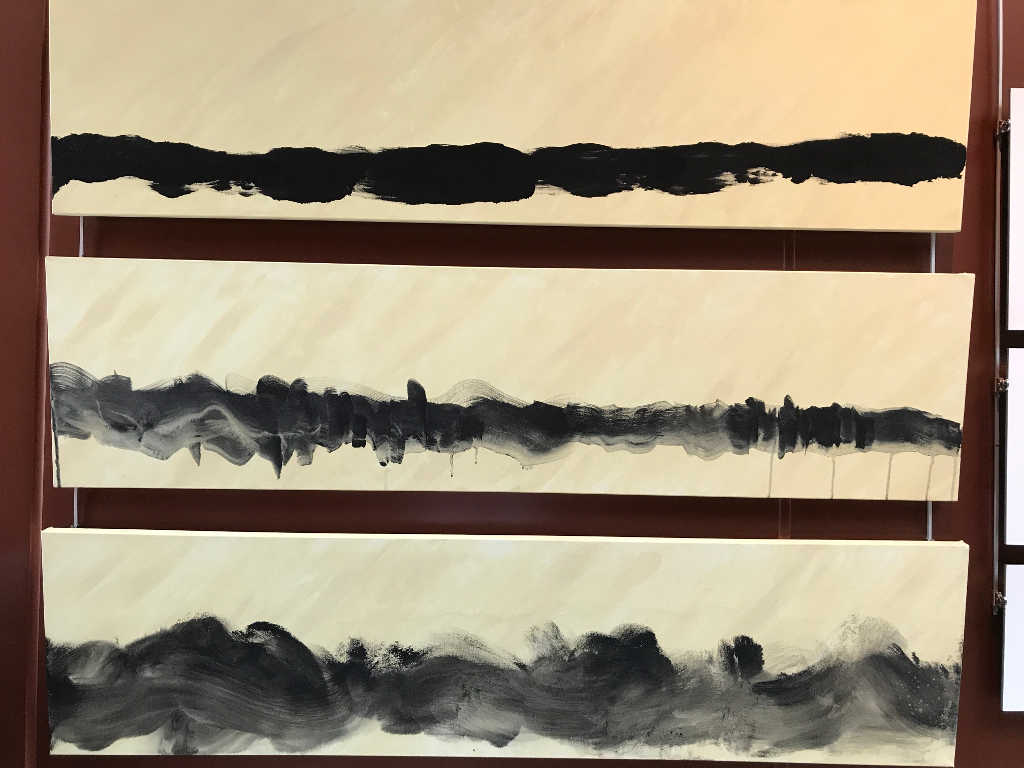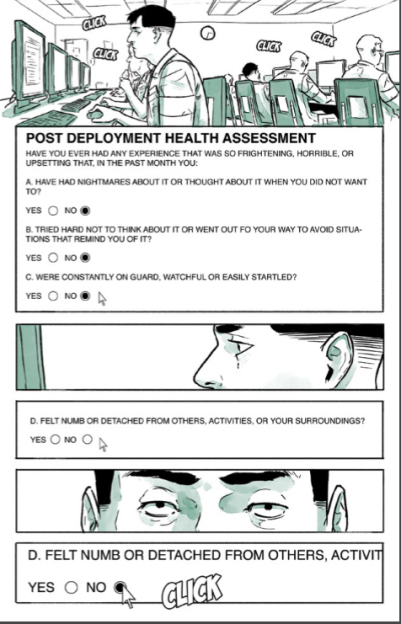The instinct and talent to paint pictures is mysterious to those of us who possess neither. I suppose the inclination and some of the talent is god-given and then is nourished by training and practice. When it comes to soldier-and-veteran artwork, many of the same questions arise as in regard to writing about war: What story does the painting tell? What were the circumstances of its production? What were the artists trying to achieve? How do we measure quality and achievement? What constitutes a “beautiful” war painting? Can a war painting be an “anti-war” painting? How are stock scenes transformed and transcended? Can they be, or should they even try? Who are the artists, and what is their story? What makes them tick? Do paintings romanticize or glorify war? Can creating art about war experience be therapeutic?
From the viewer’s perspective, paintings, far-more-so than writing, are instantaneously apprehensible. An emotional response and aesthetic judgement is formed as soon as a painting is viewed. And yet, lasting cultural presence is harder to establish for art than for writing: The mechanisms of cultural memory so at-hand in book publication and book sales and preservation in libraries are diffuse when it comes to art. Exhibitions are acclaimed in the moment, but pictures are viewed quickly and easily moved-on from. The exhibit is soon over, paintings are sold or not, and most will never be publicly viewed again. No one bats an eye at reading a reproduction of an author’s narrative, but paintings somehow imply that contemplating anything but the original artwork is a necessarily diminished experience. And even if saved on the Internet, paintings can languish unnoticed for years and decades, orphaned from all but most determined of curious observers, the sites buried more deeply in digital obscurity than even the dustiest of books on a library shelf.
Such were my sobering thoughts as I dedicated a few days to exploring contemporary soldier art available on the Internet. An interesting aspect of war-art is that the military itself sanctions and supports it, through official “combat-artist” programs and also links to artwork featured on military museum and archive websites. Search-term entries took me first to a book published by the U.S. Army Center for Military History called Army Artists Look at the War on Terrorism, 2001 to the Present, and available in full online in PDF and HTML. Army Artists Look at the War on Terrorism features eight artists, all of whom served in the Army or were associated with it on deployments to Iraq, Afghanistan, and Kuwait, as well as train-ups for deployment in the US. The volume is silent about what “the Present” date is that it refers to in the title, but I am guessing it was published sometime around 2010.
Over 90 paintings are included, in a variety of mediums such as oil, watercolor, pencil, etc. All the pictures are representational rather than figurative, with the most obvious artistic effect being heightened coloring and various ways of situating the paintings’ principal subjects. The collection clearly intends to represent different facets of a soldier’s experience—from pre-deployment to combat to camp life to interaction with locals to various maintenance and support activities. Below are three pictures I enjoyed contemplating:



A second stop on the Internet journey was an issue of the National Endowment of the Arts journal NEA Arts published in 2012 themed “The Soul of America: The Arts and the Military.” All the articles in the issue connect artistic expression to contemporary soldiering. A particular emphasis is on art as a means of understanding complicated war experiences; one article, for example, profiles Veterans Writing Project founder Ron Capps. An article titled “Seeing is Believing: War Through the Eyes of a Combat Artist” zeroes in on former-Marine combat-artist Michael Fay and his project to honor wounded veterans The Joe Bonham Project (named after the war-wounded quadriplegic protagonist of Dalton Trumbo’s novel Johnny Got His Gun), which is affiliated with the National Museum of the Marine Corps. Fay’s painting below is striking, but far more startling are the others that accompany the article, featuring badly wounded soldiers and Marines:

My search next took me to the work of civilian painter Steve Mumford. Mumford has a large presence on the web, and a solid introduction to his work is an article he himself authored titled, “Fifteen Years Into the War in Afghanistan, an Embedded Artist Looks Back.” In it, Mumford describes how many of his paintings were inspired by multiple tours as an embedded artist with US military forces. In several pictures Mumford captures the deployment experience of female soldiers, such as this one:

Mumford also painted this stunner of a picture, which is perhaps my favorite of all the paintings I discovered over several days of searching:

A final stop on this Internet tour was an article that explored in detail the use of painting as therapy: “Creating Battle Signs: Iraq/Afghanistan, War Veterans, Art Therapy, and Rehabilitation.” As the title suggests, the article takes seriously the idea that grievously wounded veterans (physically and psychologically) might find expression for or escape from their pain by making art. The paintings offered for contemplation are by far the most non-representational, obviously figurative of any I’ve mentioned so far:

So, much art, all interesting and all to my eye accomplished. All put to different purposes: to document, to honor, to shock, to evoke, to help, to express. I invite you to spend more time with the artists, paintings, articles, and books I have canvassed here.










































